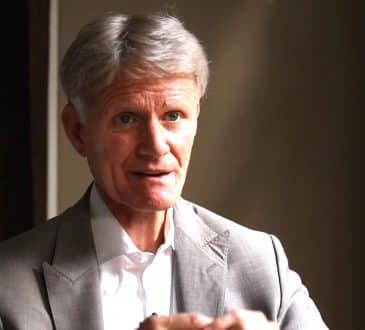Why it’s up to leaders to re-engage their teams

Employee engagement is the holy grail that almost all employers are searching for in order to have a more productive workforce, deliver meaningful outcomes, create a happier workplace and, as a result, deliver a better bottom line. Sadly, the statistics aren’t great. If we look at 2022 data from Gallup (the global authority on all things related to employee engagement), employees who are engaged only account for 23% of our workforce; the actively disengaged category represents 18%; and the fence-sitting, quietly quitting, not engaged group accounts for a whopping 59%.
The cost of dis-engagement
The impact of the fence-sitting not engaged group on the global economy is a staggering US$8.8 trillion or 9% of the global GDP. That’s a lot! It’s a bit like having a team of ten rowers on your boat, with three people rowing their heart out, five just sitting with their arms crossed adding dead weight, and two people rowing in the opposite direction. How fast do you reckon your boat is going now?
We moved the wrong needle
And it’s not just the 2022 statistic that worries me, it’s the global trend for the last fifteen odd years. The reviewing the trends, it highlights the issue in stark terms. We’ve worked really hard to reduce the actively disengaged category – the disgruntled, disruptive, disenchanted – yet the fence-sitting, quietly-quitting category has more or less remained the same over the years. Even though we’ve seen fairly consistent upward trends in engaged employees, it’s the overwhelming volume of the disengaged workforce that signals our greatest source of untapped talent.

The expert advice
We’ve tried to ‘manage’ this situation by using drivers recommended by Gallup, that suggests:
- Purpose: This helps us to connect organisational purpose in an inspiring way; however, unless we get individuals connected with the purpose through practical activities and initiatives, it just ends up being another poster on the wall or slide for your head-office presentation.
- Development: We send employees on personal and professional development courses, but this generally helps to advance the careers of the already engaged employees. The quiet ones usually don’t get a lot of attention.
- Caring manager: While a caring manager improves engagement, the issue is that the accountability is on a single individual or department.
- Ongoing conversations and focusing on strengths: These are essential elements, but providing opportunities to raise concerns or improvement ideas without following through doesn’t drive engagement. In fact, it works in the opposite direction: employees get frustrated that management hasn’t done anything about their ideas or has rejected them without reason.
From Disengaged to Involved
If you don’t have systems and processes to capture ideas, and then collate, prioritise and execute them, you’re better off not asking employees for improvement ideas at all. Just having ongoing conversations with employees is not enough, managers need to get employees involved in solving the issues – their input is what drives engagement. Even Gallup, neglects to identify the importance of involving employees as drivers of change and engagement. Take any change management framework, such as Kotter, ADKAR or Kübler-Ross. Take any coaching framework, such as GROW. What do these all have in common? They all prioritise the involvement and buy-in of employees. This is the holy grail.
It’s not that hard
Having worked across multiple companies and countries for the last 25 years, I know for a fact that the fence-sitting, quietly quitting employees are only seemingly disengaged. While you may think that these employees turn up in body only, leaving their brains behind at the door, I’ve found that they are waiting to be discovered, leveraged and motivated.
The secret to engaging the seemingly disengaged is involvement. Get them involved in the right initiatives with the right teams that are led by the engaged few. Share their success stories at your town hall meetings to infuse positivity. Over time, you’ll notice that the ship is turning faster than expected, with the fence-sitters starting to become believers. You’ll notice their growing willingness to lead initiatives themselves. If you stay with this strategy, you’ll continually improve both productivity and engagement.
At this point, just guide them in the right direction – the essence of leadership. This is why it is up to the leaders to re-engage their workforce.
Written by Ishan Galapathy.
Have you read?
Best CEOs. Best Companies. Richest People (Billionaires). Richest Women (Billionaires). Richest in Each Country (Billionaires).
Bring the best of the CEOWORLD magazine's global journalism to audiences in the United States and around the world. - Add CEOWORLD magazine to your Google News feed.
Follow CEOWORLD magazine headlines on: Google News, LinkedIn, Twitter, and Facebook.
Copyright 2025 The CEOWORLD magazine. All rights reserved. This material (and any extract from it) must not be copied, redistributed or placed on any website, without CEOWORLD magazine' prior written consent. For media queries, please contact: info@ceoworld.biz








